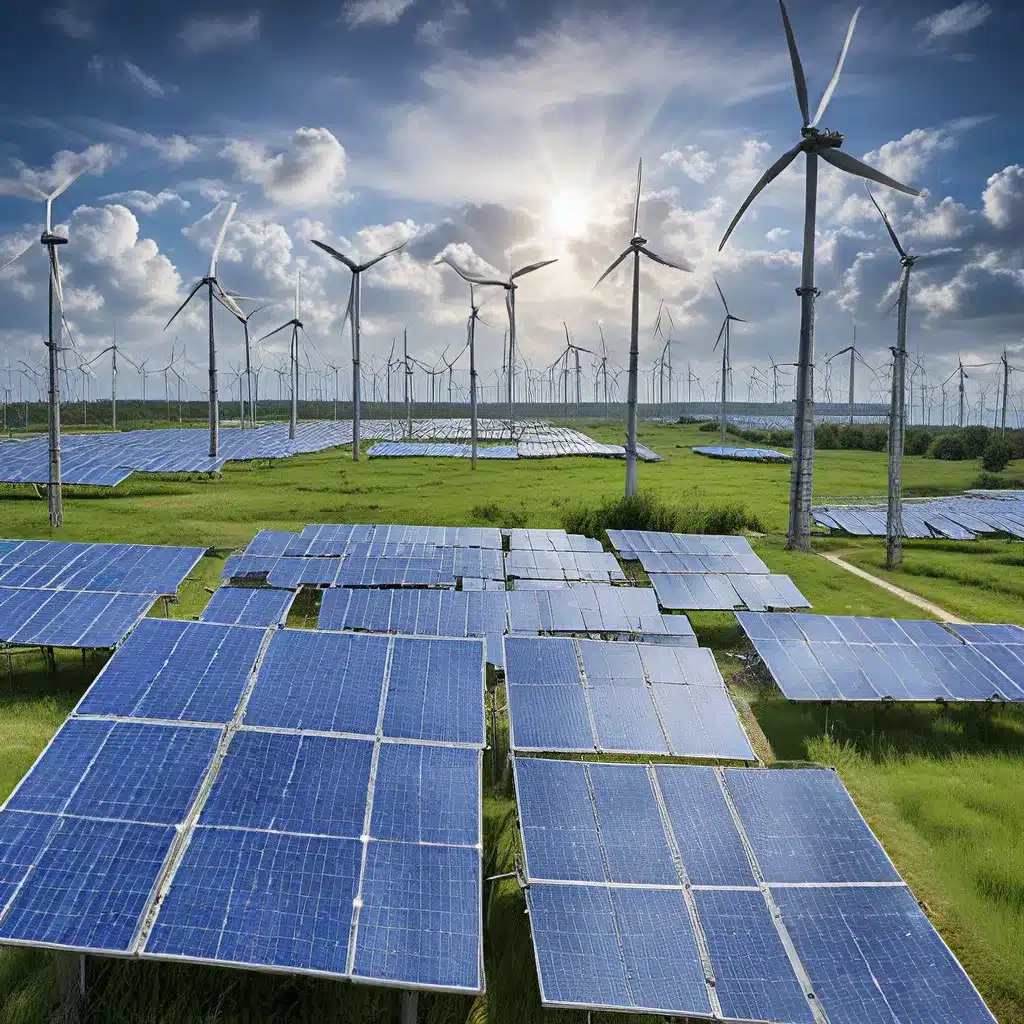
Harnessing the Power of Sensor Networks for Renewable Energy Integration
As the global energy landscape continues to evolve, the integration of renewable energy sources, such as wind and solar, has become a crucial priority for power grid operators and policymakers alike. However, the inherent variability and uncertainty associated with renewable generation poses a significant challenge to maintaining a stable and reliable electricity supply. This is where sensor networks and advanced data analytics play a pivotal role in transforming the way we manage and optimize the integration of renewable energy into the grid.
The National Renewable Energy Laboratory (NREL) has been at the forefront of developing innovative solutions to address these challenges. By leveraging data-driven approaches and physical models, NREL researchers are creating real-time situational awareness and predictive capabilities that empower grid operators to make informed decisions and effectively manage the integration of renewable energy resources.
Enhancing Grid Observability through Sensor Networks
One of the primary challenges in integrating renewable energy sources is the low observability of distribution systems, often due to a paucity of sensors and the heterogeneity of measurements. To overcome this, NREL researchers have developed distribution system state estimation methods that employ data-driven matrix-tensor completion techniques, augmented with power flow constraints, to recover the operational states of an entire system.
These advanced methods can operate in systems that lack full observability, where traditional least-squares-based approaches fall short. By flexibly incorporating any network quantities measured in the field, these state estimation techniques provide a comprehensive understanding of grid conditions, enabling better monitoring and control of distributed energy resources (DERs).
Forecasting Grid Conditions for Optimal Resource Management
The variable and intermittent nature of renewable energy sources necessitates the accurate forecasting of grid conditions to support operations and planning. NREL researchers have developed machine learning-based methods for predicting system states in the short-term future, leveraging neural networks, decision tree-based approaches, and ensemble learning techniques.
These forecasting capabilities allow grid operators to better coordinate control efforts and prioritize control needs, ultimately improving grid reliability, resilience, and economic efficiency. By anticipating changes in grid conditions, utilities and system operators can optimize the dispatch of controllable resources and prepare for fluctuations in renewable energy generation.
Enhancing Solar Forecasting with Machine Learning
One prominent example of NREL’s work in this domain is the collaboration with IBM on the SunShot Initiative’s Improving Accuracy of Solar Forecasting program. Utilizing Watson-like technology, IBM researchers have developed a self-learning weather model and renewable forecasting technology (SMT) that can improve solar forecasting accuracy by as much as 30%.
This innovative machine learning platform synthesizes an incredible amount of data from various sources, including historical weather data, real-time measurements from local weather stations, sensor networks, satellites, and sky imagers. By identifying the most accurate weather prediction models, the SMT solution can provide utilities and grid operators with forecasts ranging from minutes to months in advance, enabling them to better match consumer electricity demands with available solar generation.
Securing Sensor Networks and IoT Devices
As sensor networks and IoT devices become increasingly integral to the modern power grid, the issue of cybersecurity cannot be overlooked. Researchers at NREL are exploring advanced security protocols and encryption techniques to safeguard these critical infrastructure assets from cyber threats.
One key focus area is secure communication between sensor nodes and central control systems, ensuring the integrity and confidentiality of the data being exchanged. Additionally, NREL is investigating energy-efficient security measures to maintain the long-term viability of sensor networks, which often operate on limited power sources.
Optimizing Energy Consumption in Sensor Networks
The energy consumption of sensor networks is another critical consideration, as it directly impacts the sustainability and longevity of these systems. NREL researchers are exploring energy-efficient sensor network designs that leverage low-power hardware, advanced power management strategies, and energy harvesting technologies.
By optimizing the energy consumption of sensor nodes, network lifetime can be extended, reducing the need for frequent battery replacements or costly maintenance. This is particularly important for sensor networks deployed in remote or inaccessible locations, where accessibility is a significant challenge.
Embracing the Future of Sensor Networks and Renewable Energy Integration
The advancements in sensor network technologies, data analytics, and machine learning are transforming the way we manage and integrate renewable energy resources into the power grid. As the global demand for clean, sustainable energy continues to grow, the role of sensor networks in improving grid observability, forecasting grid conditions, and optimizing energy consumption will become increasingly crucial.
The work being done by NREL and other leading research institutions highlights the immense potential of sensor networks to enable a more resilient, efficient, and sustainable electric grid of the future. By harnessing the power of these technologies, we can pave the way for a future where renewable energy seamlessly integrates with the power grid, providing reliable and affordable electricity to communities around the world.
To stay up-to-date on the latest developments in sensor networks and IoT technologies, be sure to visit sensor-networks.org, a leading resource for professionals, researchers, and enthusiasts in this field.